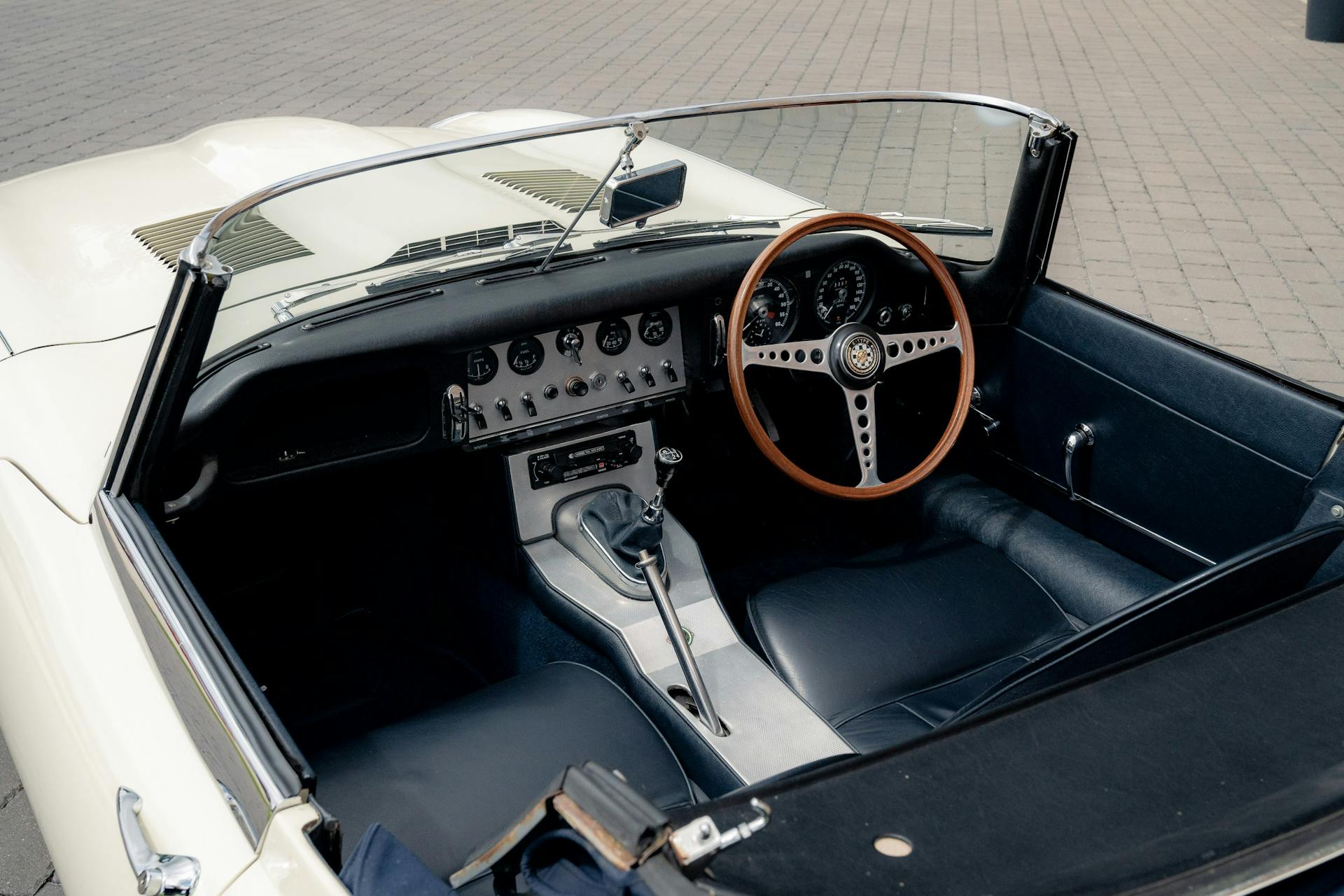1962 Jaguar E-Type

The Jaguar E-Type introduced in May 1961 caused a major sensation when it appeared with instantly classic lines and 150mph top speed. The design owed much to that of the racing D-Type. Indeed, the E-Type would be one of the last great sports cars developed directly from a successful competition ancestor. The monocoque tub formed the main body/chassis structure while a tubular spaceframe extended forwards to support the engine. The same 3.8 litre unit was used with a claimed 265 horsepower on tap, the E-Type's performance did not disappoint; firstly, because it weighed around 500lbs less than the XK150 and secondly because of the experience gained with the D-Type, they created one of the most elegant and efficient shapes ever to grace a motor car. Dunlop disc brakes were fitted to all four wheels, those at the rear being mounted inboard alongside the differential to reduce un-sprung weight. Only in terms of its transmission did the E-Type represent no significant advance over the XK150, with the durable four-speed Moss gearbox that it retained. It is the very early 'flat floor' 3.8 litre cars built prior to February 1962 which, for many enthusiasts, remain the most desirable.
One of the rarest and most desirable E-Type variants. The Jaguar E-Type 3.8 Flat Floor Roadster, This iconic car was produced in the early 1960s and is highly sought after by collectors and enthusiasts. Owning one of these is like having a piece of automotive history. The E-Type 3.8 Flat Floor Roadster is a classic that continues to turn heads and captivate car enthusiasts around the world of often regarded as the most beautiful car in the world. The Jaguar E-Type truly took the world by storm when it was unveiled at the Geneva motor show in 1961 so much so that the now legendary development driver Norman Dewis was tasked with driving a second car directly from the factory in Coventry to Geneva through the night to cope with the demand. The looks of the car where truly breath-taking especially considering what was commonly available at the time, but what probably amazed people even more was that the car genuinely had the performance to back up the good looks, being capable of 150 MPH in standard form.
The E-type
The E-Type 3.8 Flat Floor Roadster is powered by a 3.8-liter inline-six engine, delivering impressive performance for its time. It typically came with a four-speed manual transmission, adding to the driving experience and making it a true sports car. The "Flat Floor" designation refers to the early models that had a flat floor inside the cockpit. This version features a fabric roof, distinguishing it from the fixed roof model. The Roadster design adds a touch of sophistication and enhances aerodynamics. The E-Type is renowned for its sleek and aerodynamic design, with a long hood and distinctive headlight covers. It's often considered one of the most beautiful cars ever made. Inside, you'll find a luxurious and minimalist cockpit with high-quality materials. The flat floor version has a unique charm with its simple and elegant interior design.
In its time, the E-Type 3.8 was known for its impressive speed and handling. It was a favorite among celebrities and racing enthusiasts alike. The E-Type is often associated with the swinging '60s and is a symbol of automotive design and innovation from that era. The Jaguar E-Type! The 1961 model, the Series 1, is like the debutante of the automotive world. Enzo Ferrari even called it the most beautiful car ever made, and who could blame him? The design was revolutionary, and it had the performance to match.
This Car
Supplied new by Fields Engineering, Sussex and dispatched to its first owner on 17th April 1962,, this well-presented E-Type is offered in its original colour combination of Old English White over a dark blue interior. Having been part of a private collection for many years it is believed this E-Type was subject to an extensive restoration circa 20 years ago. Since then the car has reportedly covered circa 2,334 miles. The paintwork is still in very good condition with very few blemishes to show, the interior also presents nicely. At some stage during its life the DVLA have given the car the following chassis number: SABTVR03970243943. However, the Jaguar Production Record Trace Certificate, chassis stamp and chassis plate all state that the chassis number is 850479 with the original engine (engine number R4971-9). The history file that accompanies this car includes a Jaguar Production Record Trace Certificate, various sundry invoices and the current V5 registration document.
Date of first registration 17-04-1962 Uk Supplied Car
Comes with
Cherished registration number: DYC 83
Original tool kit
stainless steel exhaust
Chassis Number 03970243943
Engine number R49719